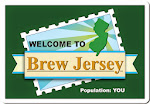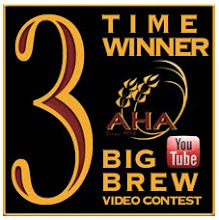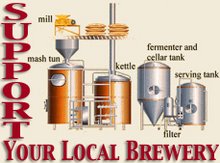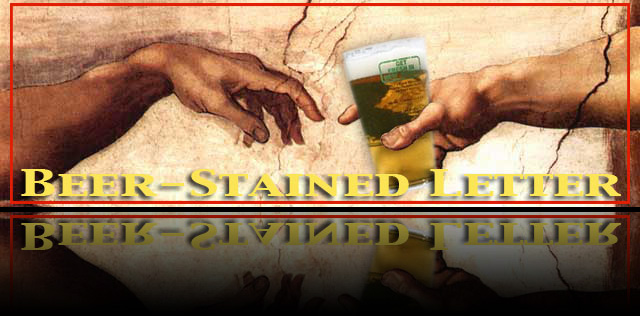Here a fest, there a fest, everywhere a fest
A busy weekend gets rolling on Thursday in Jersey City and wraps up in along the Delaware in Lambertville and in a place once known as German Valley.
So hang on, because here it comes: Jersey City hosts its fifth annual Oktoberfest from 4 p.m. to midnight along Grove Street. As far as beer goes, this one is the domain of Samuel Adams Octoberfest and Yuengling. They're obviously not Jersey brews, but Sam Adams Octoberfest on draft is worth putting in your glass.
Jersey City hosts its fifth annual Oktoberfest from 4 p.m. to midnight along Grove Street. As far as beer goes, this one is the domain of Samuel Adams Octoberfest and Yuengling. They're obviously not Jersey brews, but Sam Adams Octoberfest on draft is worth putting in your glass.
If you're a fan of this event, you can do your part to introduce the organizers to some of the home-state fall seasonals: Flying Fish's Oktoberfish, Hoffmann Lager Beer Oktoberfest and Ramstein's Oktoberfest. Toss in River Horse's Hipp-O-Latern Imperial Pumpkin Ale, too.
The thing to note about the event is, it wasn't that long ago that a pass down Grove Street was a tour of a moribund city neighborhood – empty store fronts and boarded-up buildings. Some condo development plus the addition of bars and restaurants has helped revive area, turning up the buzz on South Grove. Down the Shore, Toms River has a brewpub, Artisan's, making those who live in the county seat of Ocean County lucky that fresh beer is only as far as a trip to the corner of Bay and Hooper avenues.
Down the Shore, Toms River has a brewpub, Artisan's, making those who live in the county seat of Ocean County lucky that fresh beer is only as far as a trip to the corner of Bay and Hooper avenues.
On Friday, Arstisan's pours a flight of its  house-made beers, paired with a five-course meal that is chef Steve Farley's interpretation of hearty German cuisine, from appetizers to a main course of braised short ribs (with spätzle, applesauce, red cabbage and potato pancakes) that gets paired with brewer Dave Hoffmann's Oktoberfest beer.
house-made beers, paired with a five-course meal that is chef Steve Farley's interpretation of hearty German cuisine, from appetizers to a main course of braised short ribs (with spätzle, applesauce, red cabbage and potato pancakes) that gets paired with brewer Dave Hoffmann's Oktoberfest beer.
Beer writer and PubScout Kurt Epps emcees, and the Fire House Polka Band provides the entertainment.
Saturday is the busiest day of the week, featuring a cask ale event in Middlesex County and two other Jersey brewer events. Uno Chicago Grill & Brewery in Metuchen holds the fall answer to its spring cask ale event. It's pay as you go, with a purchase of tickets at the bar that are redeemed for pours of beer in either 10-ounce or pint portions. Food orders from Uno's menu are also available for purchase.
Uno Chicago Grill & Brewery in Metuchen holds the fall answer to its spring cask ale event. It's pay as you go, with a purchase of tickets at the bar that are redeemed for pours of beer in either 10-ounce or pint portions. Food orders from Uno's menu are also available for purchase.
This marks the fifth time Uno brewer Mike Sella has assembled a lineup of great ales that includes cask versions of some of his house brews and beers from the tri-state region and beyond. In March, the event featured the likes of Weyerbacher's Hops Infusion and Blithering Idiot (Easton, Pa.); Sixpoint's Bengali IPA and Righteous Rye (Brooklyn); and Uno's Scotch Ale and Gust N Gale Porter; this time Mike will have a casked Oktoberfest out there as part of the house offerings.
"We've had something from Tröegs each time ... Weyerbacher, River Horse ... I always have something from Climax, and I will again. Last time we had two from Sixpoint, which I may be able to come up with again. Last time they actually helped us out, and the guy who owns the Brazen Head (bar) in Brooklyn helped us out. He loaned us two of his pins, and that's how we got (Sixpoint) in."
On prior occasions, the event has been spread over two days. But there's a caveat here: Its popularity has become such that the beers have sold out on the first day. So figure on Saturday being your best shot. It begins at noon.
Follow your compass a little bit north and west and you'll find a preview of High Point Brewing's Winter Wheat Doppelbock at the brewery's monthly open house and tour, from 2-4 p.m. Other beers available for tasting and growler purchase will be Ramstein Golden Lager and Blonde. The doppelbock usually comes out in November and is the beer that High Point uses to make its incredibly good Icestorm eisbock when winter finally arrives. The brewery announced Wednesday on its Facebook page that its top-rated Oktoberfest beer had sold out. Alas, if you missed it you have to wait until next year. Speaking of Oktoberfest, the weekend wraps with a pair of fall observances – River Horse Brewing's two-day gig in the brewery's back lot, and Long Valley Pub and Brewery's annual fest on the patio of a centuries-old stone barn that houses the brewery and restaurant (which underwent some renovations last year.)
Speaking of Oktoberfest, the weekend wraps with a pair of fall observances – River Horse Brewing's two-day gig in the brewery's back lot, and Long Valley Pub and Brewery's annual fest on the patio of a centuries-old stone barn that houses the brewery and restaurant (which underwent some renovations last year.)
The folks at River Horse know how to entertain, and twice a year – at Lambertville's ShadeFest and the brewery's Oktoberfest – they make a show of it. Like ShadFest, the fall event is a pay-as-you-go affair, with a brew in a commemorative pint glass available for purchase for 7 bucks and refills for $4. At ShadFest, brewer Chris Rakow was running the fretboard on a Paul Reed Smith guitar, fronting his band as part of the entertainment. Look for that again this weekend, plus plenty of food from vendors.
At ShadFest, brewer Chris Rakow was running the fretboard on a Paul Reed Smith guitar, fronting his band as part of the entertainment. Look for that again this weekend, plus plenty of food from vendors.
And don't forget, Triumph Brewing's New Hope brewpub is just a short stroll over the bridge to the Union Square plaza. Meanwhile, Long Valley's party settles in with a pumpkin ale and Oktoberfest brews on its patio on Sunday, beginning at noon, with music from Mama's Stew. This event has quite a following and is usually well attended.
Meanwhile, Long Valley's party settles in with a pumpkin ale and Oktoberfest brews on its patio on Sunday, beginning at noon, with music from Mama's Stew. This event has quite a following and is usually well attended.
Officially a part of Washington Township in southwestern Morris County, the Long Valley hamlet was known as German Valley from its founding during Colonial Days until World War I, when a German reference to anything in this country was certain to invite a backlash of hostility and prompt a name change. (Incidentally, World War I, and the subsequent anti-German sentiment, were catalysts for the advent of Prohibition, with the dry factions ardently pointing out that most of the brewers in the US at that time were German or of German lineage.) And then there is this item from Peter Kennedy over at simplybeer.com, a tasting of Garden State beers (Ramstein, New Jersey Beer Company, Boaks Beer and Cricket Hill) from 3-5 p.m. Sunday at Halo Lounge, in Rutherford. The event benefits the Meadowlands Museum.
And then there is this item from Peter Kennedy over at simplybeer.com, a tasting of Garden State beers (Ramstein, New Jersey Beer Company, Boaks Beer and Cricket Hill) from 3-5 p.m. Sunday at Halo Lounge, in Rutherford. The event benefits the Meadowlands Museum.
Tickets are 40 bucks and can be purchased by contacting the museum (201-935-1175 or e-mail meadowlandsmuseum@verizon.net).
Lastly, NJBeerEvents has a calendar round-up here.
















